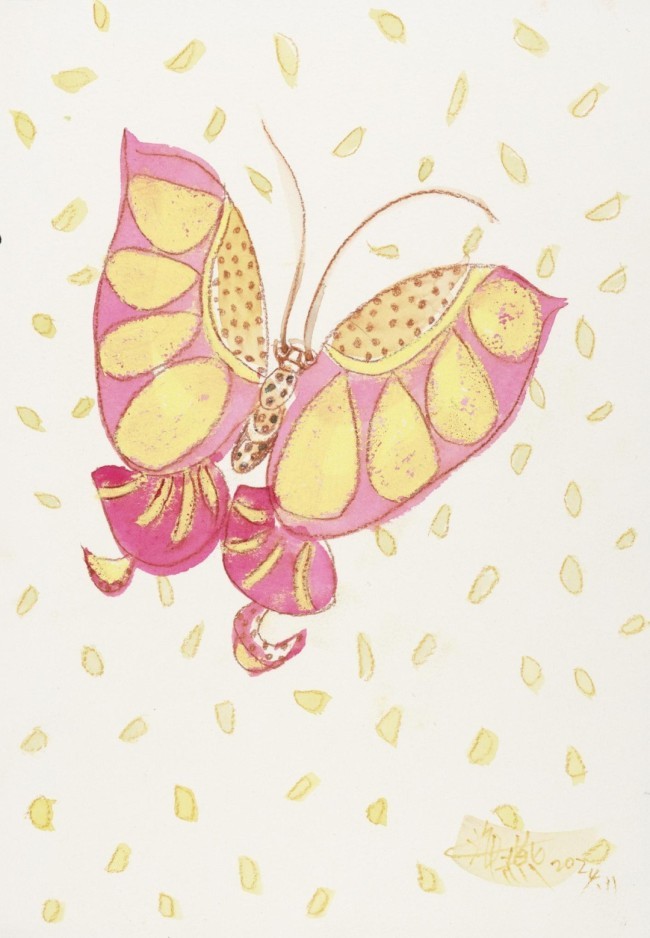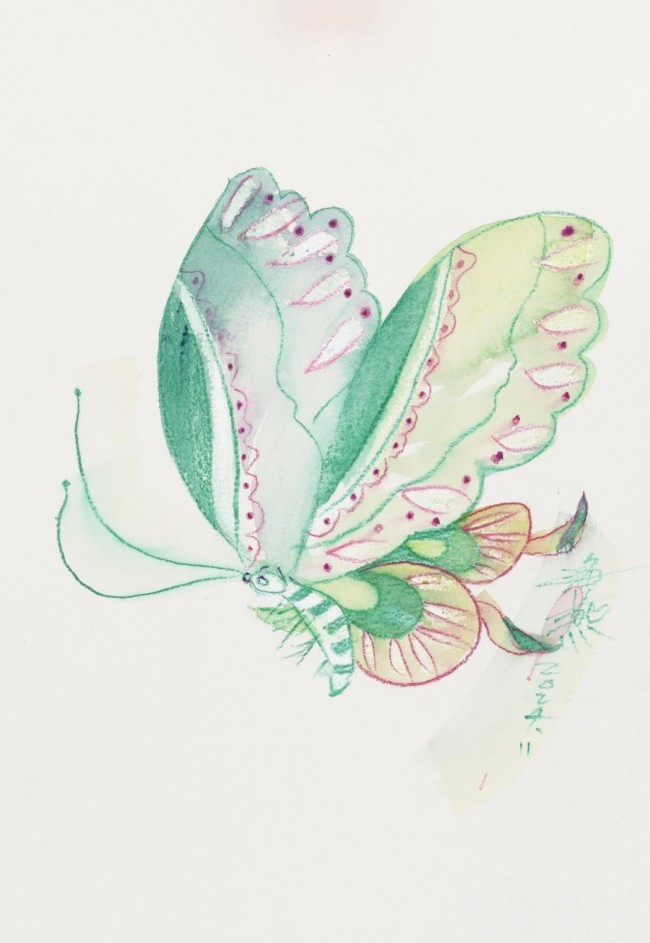显然,海燕画花有自己的观念,一是她不只表现生命的快感,二是她不赋予象征性,她借用一个寓意将纯视觉的经验审美转化成人与自然之间的因缘。我们勿把她的作品只当作视觉的本体审美,倘若懂花的人会在她的作品里发现不同季节不同时令的花卉集于一个空间中,这也契合了中国民俗艺术的纹样寓意。传统中国的民俗艺术一直将不同时空、季节的花果、昆虫或不同季节的人、事抑或物随意愿拼合在一起,以生活习俗经验给予美好的寓意,这种借喻式的暗指充满在海燕的花境里,让她的奔放的表现情感归属到一种社会文化的关注上,并将现代人的激情巧妙地糅合在文化的境遇中。
It is apparent that Haiyan has her own unique concepts attached to flowers, for first she does not only express the liveliness to the flowers, and second, she does not adopt symbolic meanings to flowers. She utilizes the folk art metaphors to construct connections between human and reality via converting pure visual sensation of aesthetics. We should not see her works just for the visual aesthetics of the paintings, but also the Chinese folk art connotations as we can see that she includes flowers from different seasons in one painting. It is a common technique adopted by Chinese folk artists by randomly modularizing flowers, fruits, and insects from different times, or people, subjects, scenarios from different seasons in one picture. Fine wishes are vested in the life experiences and customs. The metaphors are seen everywhere in the floral realm created by Haiyan in her works, diverting her strong feelings to a focus on interest on society and culture, and mashing tactfully the passions of modern people into the cultural realm.
(文/顾黎明,清华大学美术学院教授)
Gu Liming, Artist professor supervisor, Academy of Arts & Design, Tsinghua University

蝴蝶No.20 18x26cm 纸本水彩 2024


蝴蝶No.15 18x26cm 纸本水彩 2024